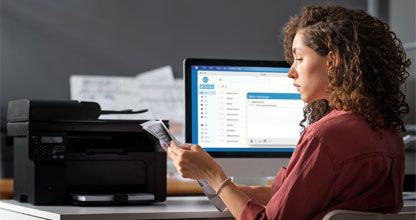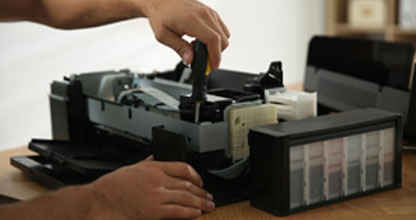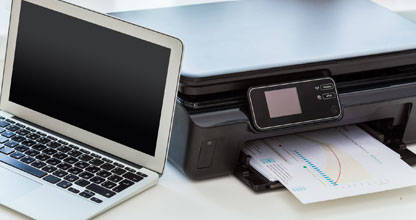Latest Blog

🖨️ Printer Setup & Installation
Setting up a new printer may seem overwhelming, especially if you’re not familiar with technology, but with the right steps the process becomes quick and stress-free. Whether you are connecting a home printer for personal use or installing one for your office, proper setup ensures smooth performance and fewer issues in the long run. The first step is to unbox your printer and place it on a stable surface near a power outlet and your computer or Wi-Fi router. Connect the power cable, turn on the printer, and follow the on-screen instructions. Most modern printers come with a display panel that guides you through language, region, and initial setup. Next, install the ink cartridges or toner and load the paper tray. After that, connect your printer either through USB or Wi-Fi. Wireless connection is the most convenient, as it allows multiple devices to print without cables. To complete the process, download the official drivers or setup software from the manufacturer’s website. Once installed, run a test print to confirm everything is working. With correct installation, your printer will deliver reliable performance, making printing tasks seamless and efficient.

🛠️ Printer Repair & Maintenance
Printers are essential tools for both homes and offices, but like any machine, they require regular care and attention. Proper repair and maintenance not only extend the life of your printer but also help you avoid unexpected breakdowns and costly repairs. One of the most effective ways to maintain your printer is by cleaning it regularly. Dust, ink residue, and paper debris can clog internal parts and cause paper jams. Gently wipe the exterior, and follow the manufacturer’s instructions for cleaning the rollers and printhead. Always use high-quality ink or toner cartridges to prevent leakage and ensure consistent print quality. Paper jams are among the most common issues. Avoid them by using the correct type and size of paper, and never overload the tray. If your printer displays error codes, check the user manual or the manufacturer’s website for troubleshooting guidance. When technical issues persist, professional repair services may be required. Certified technicians can handle complex problems such as hardware failures, faulty sensors, or connectivity issues. Regular servicing, combined with careful handling, ensures that your printer stays reliable and delivers high-quality prints every time. A little attention today can save you significant time and money tomorrow.

🌐 Wireless & Network Setup
In today’s fast-paced digital world, wireless and network-enabled printers have become a necessity for both homes and businesses. Gone are the days of messy cables and limited access—wireless setup allows multiple devices to connect to a single printer, making printing seamless and efficient. The process of wireless printer setup begins by ensuring your printer supports Wi-Fi connectivity. Most modern printers come with built-in wireless features and a simple setup wizard. Start by powering on the device and selecting your Wi-Fi network from the printer’s control panel. Enter the password, and your printer will connect directly to your home or office network. Once connected, install the necessary drivers or software on your computer. Manufacturers like HP, Canon, Epson, and Brother provide downloadable setup tools that automatically detect the printer on your network. For mobile devices, simply install the printer’s app or use built-in options like Apple AirPrint or Google Cloud Print for direct printing. Network setup not only boosts convenience but also enhances productivity, allowing multiple users to share a single device. Whether it’s printing from a laptop, tablet, or smartphone, wireless connectivity ensures you can print from anywhere—without the hassle of cables.
Know More
About Us
We’re a team of printer specialists dedicated to helping you get the most from your printing devices.
With years of experience in the printing industry, we offer expert support, quality products, and trusted service to homes and businesses.
Contact
Need help or want to book a service? We're here for you!
info@printerscare.online
Business Hours: Mon–Sat, 9 AM – 6 PM
Learn More →
✅ Inkjet Printers
Inkjet printers spray tiny droplets of ink directly onto paper. They use a print head that moves back and forth while the paper feeds through. The ink dries instantly, creating sharp text or colorful images.
- Great for: Home use, photo printing, and color documents
- Uses: Liquid ink cartridges
✅ Laser Printers
Laser printers use static electricity and toner powder to create prints. A laser beam "draws" the image on a drum, which then attracts toner particles. The toner is fused onto the paper using heat.
- Great for: High-speed, high-volume printing
- Uses: Toner cartridges (powder-based)


